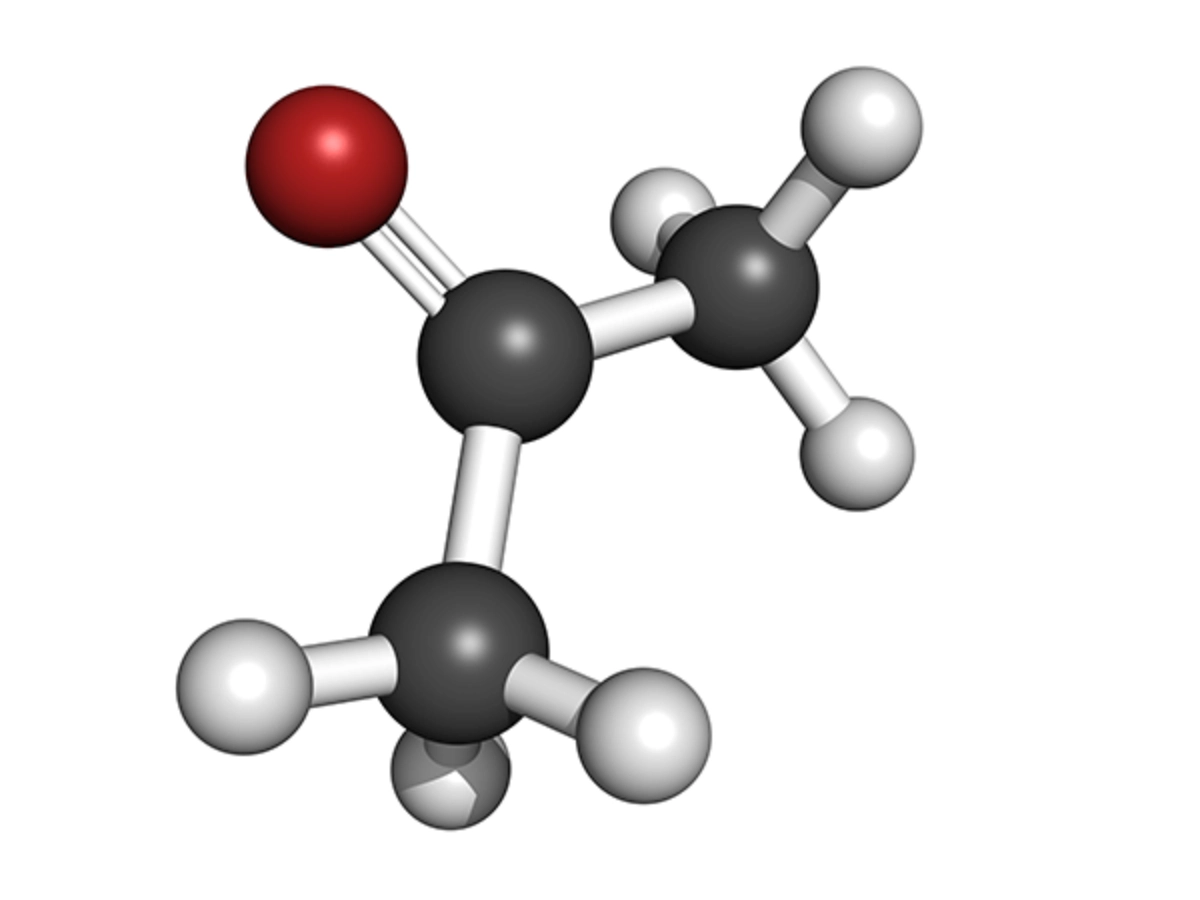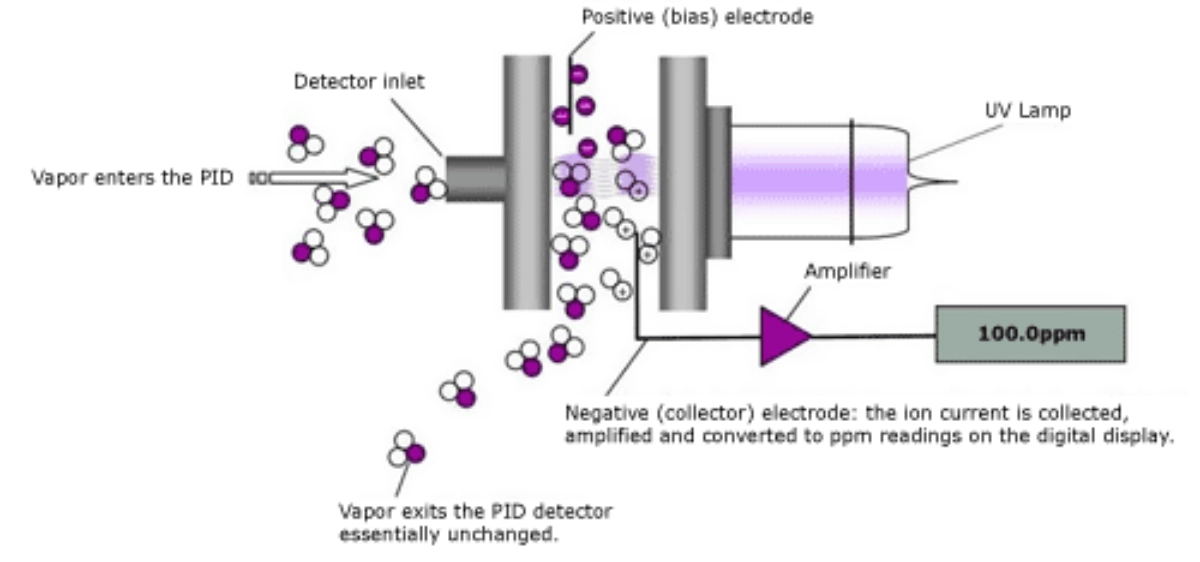Total Volatile Organic Compounds, commonly referred to as TVOCs, are a diverse group of organic chemicals present in both indoor and outdoor air. While the term might sound technical, its impact on our environment is quite direct. They are a group of compounds containing carbon that have a high vapor pressure in the air. There are abundant VOCs emitted from everyday activities, among which some are colorless, some odourless, and some toxic.
TVOCs are a diverse chemical molecule group that includes both dangerous and safe variations. They serve a significant role in assessing indoor air quality. Researchers believe that there may be over 10,000 different volatile chemicals in existence. TVOC monitoring is an efficient way to detect exposure to toxic VOCs. This article covers information on total volatile organic compounds, their sources in the ambient air, characteristics, health and environmental impact, possible corrective measures, the need for TVOC monitors, and different methods of TVOC monitoring.
What is TVOC?
Volatile Organic compounds (VOCs) are a wide range of airborne organic molecules containing carbon and hydrogen that evaporate and disperse readily at ambient temperature. Various building materials, paints, furniture, and common consumer products can release VOCs. The strong odour of a VOC will alert you to its presence.
VOCs are a group of compounds with high vapor pressure and low water solubility. In other words, these substances won’t easily bind to themselves (volatile) or dissolve in water (organic). The main VOCs of concern include substances like benzene, toluene, formaldehyde, ethyl benzene (BTEX), xylene, acetaldehyde, ethylene glycol, methylene chloride, acetone, styrene, and others.
Since there are thousands of VOCs (Volatile Organic Compounds) that can be present in a room, TVOCs (Total Volatile Organic Compounds) are used to represent the combined group of these VOCs in the environment. Essentially, TVOCs indicate the total amount of VOCs in the air, giving a clear picture of the overall level of these contaminants. In simpler terms, TVOCs are the total sum of all VOCs present in the environment.
TVOC in Atmosphere:
Have you ever noticed an unusual odour when you walk into a building under construction, a freshly painted or recently furnished room? This intense odour indicates the presence of Volatile Organic Compounds (VOCs) in the air. We are in continuous contact with several products that contain or emit VOCs, like disinfectants, paints and varnishes, solvents, semiconducting materials, rubber, vehicle exhaust, fuel, ink, adhesives, etc. Each VOC has its characteristic signature. For example, ethene is a VOC emitted from vehicle exhaust due to combustion, while isoprene is the VOC emitted from broadleaf trees.
VOCs with low reactivity that remain in the atmosphere for large durations of time are known as Persistent Organic Pollutants (POPs), and some VOCs are known as Hazardous Air Pollutants (HAPs) because of their toxicity.
The presence of VOCs in indoor and outdoor areas is of major concern regarding air pollution. Indoor VOCs have more potential to affect human health adversely. In contrast, the VOCs emitted outdoors are of concern due to their role in the production of other harmful pollutants, such as ozone, particulate matter, photochemical smog, etc, under certain conditions.
Below are some common VOCs found in urban atmospheres with their characteristic sources and approximate lifetime in the ambient air.
|
Compound |
Atmospheric lifetime (approx) |
Characteristic Sources |
|
Ethane |
1.5 months |
Natural gas, biomass burning |
|
Acetylene |
15 days |
Vehicular emission, biomass burning |
|
Methanol |
12 days |
Plants, VOC oxidation |
|
Propane |
11 days |
Liquified Petroleum Gas (LPG), Natural gas |
|
Benzene |
10 days |
Industrial emissions, vehicle emissions, biomass burning |
|
iso/n-Butane |
5 days |
Vehicular emissions, LPG |
|
Ethanol |
4 days |
Plants, biofuel |
|
iso/n-Pentane |
3 days |
Vehicle emissions, gasoline evaporation |
|
Toluene |
2 days |
Solvents, vehicle emissions |
|
Ethene |
1 day |
Vehicle emissions |
|
Formaldehyde |
1 day |
VOC oxidation, biomass burning |
|
Isoprene |
3 hours |
Plants |
[Source from World Meteorological Organization, Bulletin no.- Vol 68 (2) – 2019]
Longer-lived species such as ethane and propane are less reactive and slower to form secondary products such as ozone. However, other VOCs greatly contribute to ground-level ozone, smog, and particulate matter in the atmosphere through photochemical reactions. The major objective of air pollution research is identifying which reactive VOCs are most likely to form ozone and secondary organic aerosols and then determining which sources are primarily responsible for their emission [WHO Buletin].
2. Sources
Volatile organic molecules can originate from a variety of sources, both human-made and natural. Because manufacturers use VOCs as inorganic solvents, the majority of indoor VOCs come from ordinary household and workplace staples, including:
- Paints and solvents
- Cleaners and disinfectants
- Pesticides
- Air fresheners
- Painting and dry cleaning operations
- Materials such as paint, varnishes, sealants, adhesives, cleaners, disinfectants, furniture, pesticides, air fresheners, cosmetics, deodorants, printing inks, flooring, etc
Household items are not the only source of VOCs; our bodies also manufacture them. Bioeffluents produced by humans, while often considerably less harmful than industrial substances, may trigger responses from our bodies and those of others.
VOCs are released naturally in the atmosphere from forests, oceans, termites, wetlands, and volcanoes.
Anthropogenic sources of VOC include:
- Vvehicular emissions
- Pproduction, storage, and burning of fossil fuels such as gasoline, wood, coal, or natural gas
- Industrial processes in the chemical, petrochemical, automotive, and pharmaceutical sectors,
- Petroleum handling
- Oil refining
- Bio decomposition
- Tobacco Smoke
3. Health & Environmental Impact of TVOC
HEALTH IMPACT
VOCs can have a wide range of health effects, from very harmful to having no known impact. How VOCs affect health depends on the concentration of the chemicals and how long someone is exposed to them.
Short-term effects: VOCs have short-term health impacts that may last hours or days. Symptoms may include shortness of breath, an allergic skin reaction, dizziness, nausea, and exhaustion. Short-term health impacts could include:
- VOCs can irritate the eyes, nose, and throat due to their pungent smells. When inhaled, these can irritate your eyes, nose, and throat.
- Skin issues: When VOCs are exposed to sunlight and NOx, a photochemical reaction occurs, releasing O3, which can lead to skin issues.
- Headaches: Even low amounts of volatile organic compounds (VOCs) can trigger headaches.
- Vomiting: VOCs can cause short-term nausea and dizziness, resulting in loss of coordination and vomiting.
Long-term effects: Exposure to VOCs can be extremely detrimental to your health, causing symptoms that endure for years. VOCs like benzene (C6H6) can have long-term consequences for your health. Chronic headaches and lack of coordination are two possible symptoms. Long-term health implications could include:
- Exposure to high amounts of VOCs can promote airway inflammation, leading to lung discomfort.
- Damage to the liver and kidneys: Long-term inhalation of VOCs can lead to a variety of health problems, including kidney and lung damage.
- Central Nervous System Damages: Long-term exposure to chemicals like toluene and xylene can seriously harm the nervous system.
- Cancer: Several authorities have classified many VOCs indoors as likely or suspected carcinogenic. These include benzene and formaldehyde.
Did you know this? America Cancer Society has classified chemicals like Benzene and Formaldehyde, which can be found in paint, glue, furniture wax, detergents, and thinners as human carcinogens.
ENVIRONMENTAL IMPACT
VOCs result in the formation of secondary air pollutants such as ozone, smog, and fine particulate matter, which adversely affect human health and the environment.
In the presence of sunlight, VOCs in the atmosphere react with another primary pollutant, NOx, to form ozone (O3) and fine particulate matter (PM2.5). The accumulation of O3, PM2.5, and other air pollutants in the atmosphere reduces smog formation and visibility.
Did you know this? The “new car smell” has caught many people’s attention. This scent mainly comes from volatile organic compounds (VOCs) released by the materials used inside the car’s cabin.
4. Possible Corrective Measures
Indoor air can be up to 5 times more polluted than outside air, and because we spend more than 90% of our time indoors, it is critical to keep TVOC levels under control and as low as possible. Some of corrective measures that can be taken for indoors and outdoor are as follows:
- Ventilation is critical for minimizing indoor air pollution. Keep your doors and windows open so that harmful indoor air pollutants can be decreased by airflow.
- VOCs evaporate and disperse at room temperature or higher. To reduce evaporation and dispersion of VOCs, keep temperatures and humidity as low as feasible.
- Remove or dispose of any unwanted and unused chemicals. Dispose of any unused chemicals, and purchase paints or varnishes as needed.
- Chemical leaks can destroy property and threaten human health. If you store chemicals, keep an eye out for any leaks.
- Kerosene and other fuels should not be burned indoors. To keep VOC levels under control, limit sources such as fuel burning and indoor smoking.
- When renovating, persons should not be exposed to any emissions. Renovations must be completed while no one is present in the indoor setting.
- For outdoors: Avoid areas with traffic congestion. Breathing such polluted air daily also leads to health effects in the long run.
- To minimize emissions, use low-VOC paints, adhesives, and sealants in outdoor projects
- Implement stricter controls on industries emitting VOCs, ensuring compliance with environmental standards.
- Promote electric vehicles and public transport to reduce traffic-related VOC emissions.
5. Measurement Methods of TVOC Monitoring
Different working principles for TVOC monitoring in the ambient environment are photoionization detection (PID), flame ionization detection, and semiconductor.
Photoionization detection (PID) – TVOC monitor working on the principle of PID uses high-energy photons to detect the VOC levels. The air sample drawn into the TVOC monitor is exposed to UV light of a specific output that excites the VOC molecules present in the air sample. The molecules become electrically charged as they ionizes everything that has an ionization energy less than or equal to the UV lamp output. The ions produce an electric current proportional to the concentration of TVOC and are measured by the detector.
[Source:https://www.equipcoservices.com/support/tutorials/introduction-to-photoionization/]
Flame ionization detection (FID) – TVOC monitors based on the principle of FID works similar to the PID based TVOC monitors. FID uses a hydrogen flame to ionize all the hydrocarbons present in the sample air. The ions produced are proportional to the TVOC concentration in the sample air which is detected by the detector.
Semiconductor – When a metal oxide semiconductor-based TVOC monitor is exposed to air sample, the VOC molecules react on the metal oxide surface of the sensor and dissociate into charged ions which alter the resistance of the film. This interaction is measured as a signal and is converted to TVOC concentration. However, the energy consumption is higher compared to other methods of TVOC monitoring.
6. Oizom’s Sensor Working Principle for VOC Monitoring
At Oizom, we offer various VOC sensors. Our VOC sensor module can accurately detect very low levels of Volatile Organic Compounds (VOCs) in the air in ppb/ppm. It’s designed to monitor VOC emissions from specific sources in real-time.
What makes this sensor stand out is its advanced electronics, which ensure it is compact, reliable, and capable of stable and accurate Volatile Organic Compound detection at low levels. The sensor uses photoionization detector (PID) technology, which can measure VOCs even in very low concentrations.
This VOC sensor is compact, energy-efficient, and features advanced electronics and longer lamp life. The improved 10.6 eV lamp and particle filter allow the sensor to detect VOCs at levels as low as 1 ppb.
This sensor undergoes calibration using standard gases and tools to ensure high sensitivity and accuracy. Each gas sensor is calibrated with zero and span checks in a controlled lab, following Section 12.2 of the USEPA Quality Assurance Handbook for Air Pollution Measurement Systems Volume II. Calibration is done using NIST-traceable gas standards for reliable performance.
The sensor module is a key component in odour monitoring systems like Odosense and AQBot. It’s ideal for applications such as city air quality monitoring, roadside monitoring, monitoring around oil and gas facilities, power plants, and air quality research projects.
8. Why Choose Oizom VOC Sensor?
- Compact: Our sensors are small and easy to install, perfect for use in any space, making them ideal for portable air quality monitoring. The TVOC sensors come pre-calibrated and can be quickly replaced in just a few minutes by removing and replacing the old sensor with a new one.
- Durable: The TVOC* sensor has a long life of almost two years.
- Energy Efficient: There is no need to be concerned about energy usage because our sensors are not only accurate but also energy efficient. Powered up with just 3.3 to 5V for efficient, reliable performance!
- In-house sensor tech: Oizom applies advanced data processing algorithms to compensate for the effects of temperature and humidity on the sensor output. The algorithm is designed to automatically update based on weather conditions and seasonal changes, removing its influence on the sensor performance. The advanced algorithms also compensate for the effect of the cross-sensitive gas.
- Ultra-Low Noise Electronics: The sensor module’s design is crucial for accurate measurements. Each sensor is housed in a metal casing with ultra-low-noise electronics and a base PCB. The metal casing shields the sensor and electronics from electromagnetic interference, preventing false readings.
- RoHS Compliant: Our sensors comply with the RoHS criteria for restricting hazardous substances in electrical and electronic devices.
*Note: #TVOC Sensor Housing: 2 Years, TVOC Lamp is user replaceable: 5,000 hours
9. Reasons Why TVOC Monitoring is Important
- VOCs are a group of organic compounds that are easily vaporized. There are abundant VOC emitted from everyday activities among which some are colorless and some odourless.
- Exposure to toxic VOCs may lead to severe health issues such as chronic respiratory diseases, damage to the kidney, liver, and/or central nervous system, and even cause cancer.
- VOCs in the atmosphere are major contributors to the formation of secondary air pollutants ground level ozone, fine particulate matter (PM2.5), and smog which adversely affect human health and the environment.
- TVOC monitoring is an efficient way to detect exposure to toxic VOCs.
- With an air quality monitor, you may detect trends in your TVOC values and even identify potential VOC sources. For example, TVOC measurements frequently increase substantially during workplace cleaning hours because many cleaning chemicals emit VOCs.
FAQs
1. What is TVOC, and why is it important for environmental monitoring?
TVOC stands for Total Volatile Organic Compounds, a group of harmful chemicals emitted from various sources. Monitoring TVOC levels is crucial to ensuring healthy indoor and outdoor air quality, as high levels can affect human health and the environment.
2. What are common sources of TVOCs?
TVOCs are emitted from paints, cleaning agents, building materials, industrial processes, and plants. Monitoring these sources helps mitigate air pollution and ensures regulatory compliance.
3. How do TVOCs affect human health?
Exposure to high TVOC levels can cause headaches, dizziness, respiratory issues, and long-term effects like liver and kidney damage. Monitoring TVOCs helps in reducing these risks.
4. How are TVOCs measured in the environment?
TVOCs are typically measured using air quality sensors that can detect and quantify the concentration of volatile organic compounds in the air, helping identify pollution sources.
5. What steps can be taken to reduce TVOC emissions
Using low-VOC materials, ensuring proper ventilation, and employing air purifiers effectively reduce TVOC emissions and maintain healthier air quality.






